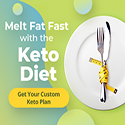The Flat Belly Diet – A Comprehensive Review
Overview
The pursuit of a trim and toned midsection is a common health and fitness goal for many individuals. One popular regimen that promises to help achieve this is the Flat Belly Diet. This article aims to provide an in-depth review of this diet plan, examining its key principles, benefits, drawbacks, and overall effectiveness.
The Plan
The Flat Belly Diet, developed by Liz Vaccariello and Cynthia Sass, is centered around the consumption of monounsaturated fats, also known as MUFAs, with every meal. These healthy fats are believed to target and reduce belly fat specifically. The diet emphasizes whole, unprocessed foods such as fruits, vegetables, whole grains, lean protein, and moderate amounts of healthy fats like olive oil, nuts, and seeds. Additionally, followers of the Flat Belly Diet are encouraged to stay hydrated by drinking plenty of water and incorporating physical activity into their routine.
Exercise
The exercise component of the Flat Belly Diet encourages a mix of cardio and strength training exercises to help burn calories, build muscle, and enhance overall fitness. The creators suggest aiming for at least 30 minutes of moderate intensity exercise most days of the week, such as brisk walking, jogging, cycling, or swimming.
Additionally, the Flat Belly Diet emphasizes the importance of staying active throughout the day by incorporating movement into everyday activities, such as taking the stairs instead of the elevator, parking farther away from your destination to walk more, and incorporating stretching or short bursts of activity during sedentary periods.
Pros
One of the key advantages of the Flat Belly Diet is its focus on promoting the consumption of nutrient-dense foods. By prioritizing whole foods and MUFAs, this diet can help individuals improve their overall nutrition and make healthier choices. Additionally, the inclusion of regular physical activity can contribute to weight loss and improved fitness levels. Some followers of this Diet report feeling more satisfied and less prone to cravings due to the inclusion of healthy fats in their meals.
Cons
While the Flat Belly Diet offers several benefits, there are also potential drawbacks to consider. The strict emphasis on MUFAs with every meal may limit food choices and make it challenging for some individuals to adhere to the plan long-term. Additionally, the focus on belly fat reduction as a primary goal may oversimplify the complex nature of weight loss and body composition. Some critics argue that spot reduction of fat in specific areas is not scientifically supported. Furthermore, individual results may vary based on factors such as metabolism, genetics, and lifestyle habits.
Wrapping Up
In conclusion, the Flat Belly Diet presents a structured approach to weight loss and belly fat reduction through the incorporation of healthy fats and whole foods. While the emphasis on nutrient-dense choices and physical activity is commendable, potential challenges such as food restrictions and unrealistic fat-targeting goals should be taken into consideration. As with any diet plan, consulting a healthcare provider or nutritionist is recommended to determine the best approach for achieving personal health and fitness goals. Ultimately, the effectiveness of the Flat Belly Diet may vary for each individual based on their unique circumstances and needs.











